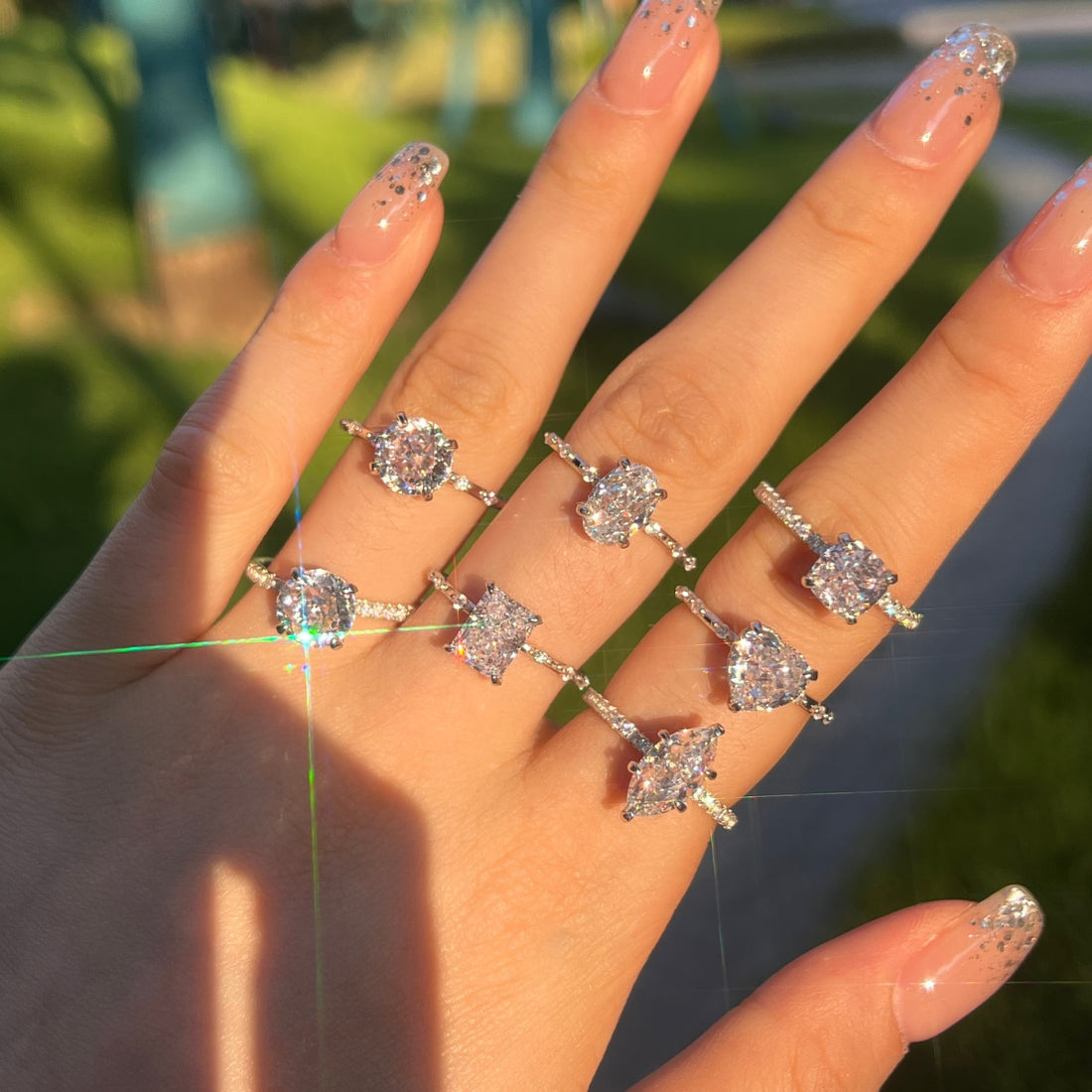
Everything you need to know about silver jewelry and how to care for it
Share
- What is sterling silver 925? Sterling silver 925, also known as 92.5% silver, is a silver alloy where the silver content is 92.5%. The remaining 7.5% consists of other metals, most commonly copper.
Sterling silver 925 is valued because it is soft enough to be easily formed into various shapes while providing durability for jewelry. This means that jewelry made of sterling silver 925 is sufficiently hard to withstand normal wear and tear, yet it is also delicate and aesthetically beautiful.
When you purchase jewelry marked "925" or "sterling silver 925", you can be assured that you are receiving a product made of high-quality silver, in accordance with the widely accepted industrial standard.
- What damages silver jewelry? Silver can undergo various processes of degradation and tarnishing due to many factors. Here are a few of them:
- Contact with chemicals: Some chemicals can react with silver and cause tarnishing or dullness of the surface. These substances include ammonia, bleach, sulfur, perfumes, and cosmetics.
- Contact with acids: Silver can react with acids present in, for example, sweat, which can be acidic, causing a chemical reaction.
- Contact with salt: Salt present in sweat or in seawater can cause corrosion of silver.
- Air oxidation: Silver can darken due to reactions with gases in the atmosphere, especially hydrogen sulfide and sulfur.
- Humid environment or humid storage: Prolonged exposure to moisture or storing jewelry in places with elevated humidity can accelerate the oxidation process of silver.
- Friction and wear: Frequent wearing of jewelry, especially when it comes into contact with other hard surfaces, can cause minor scratches and surface abrasion.
- Why does silver tarnish? Silver tends to tarnish due to a chemical reaction with hydrogen sulfides present in the air, especially in polluted atmospheres. This process is called silver oxidation. Here's how it happens in more detail:
- Reaction with hydrogen sulfides: Silver reacts with hydrogen sulfides (H2S) which may be present in the atmosphere, especially in the presence of pollutants like car exhaust, tobacco smoke, or chemical substances.
- Formation of silver sulfides: As a result of this reaction, black or gray chemical compounds called silver sulfides (Ag2S) form on the surface of silver. These compounds give silver its characteristic dark shade.
- Oxidation process: Through contact with moisture and hydrogen sulfides, a chemical reaction occurs, resulting in the formation of silver sulfides and oxides, causing tarnishing.
- How to care for silver jewelry? To maintain silver jewelry in good condition and avoid the tarnishing and dulling process, it is recommended to follow a few simple guidelines:
- Regular wear of jewelry: Simply wearing jewelry can help keep it in better condition, as natural friction and skin movements can help remove deposits and maintain a shiny appearance.
- Avoiding contact with chemicals: Try to avoid contact of jewelry with substances such as perfumes, cosmetics, hair sprays, cleaning agents, and other chemicals that can adversely affect the silver surface.
- Removing jewelry before bathing or household chores: Avoid contact of jewelry with water, especially when using detergents or cleaning agents that may contain substances that can dull the silver.
- Storage in a dry place and separated from other metals: Avoid storing silver jewelry together with other metals that may cause chemical reactions and corrosion. The best solution is to store it in special boxes, which you can purchase in our store!
- Cleaning jewelry: Regular cleaning of silver jewelry can help maintain its shiny appearance. This can be done using special silver cleaning agents or household methods such as toothpaste.
- Warning against moisture: Try to avoid contact of silver jewelry with moisture, which may contribute to the oxidation process.
